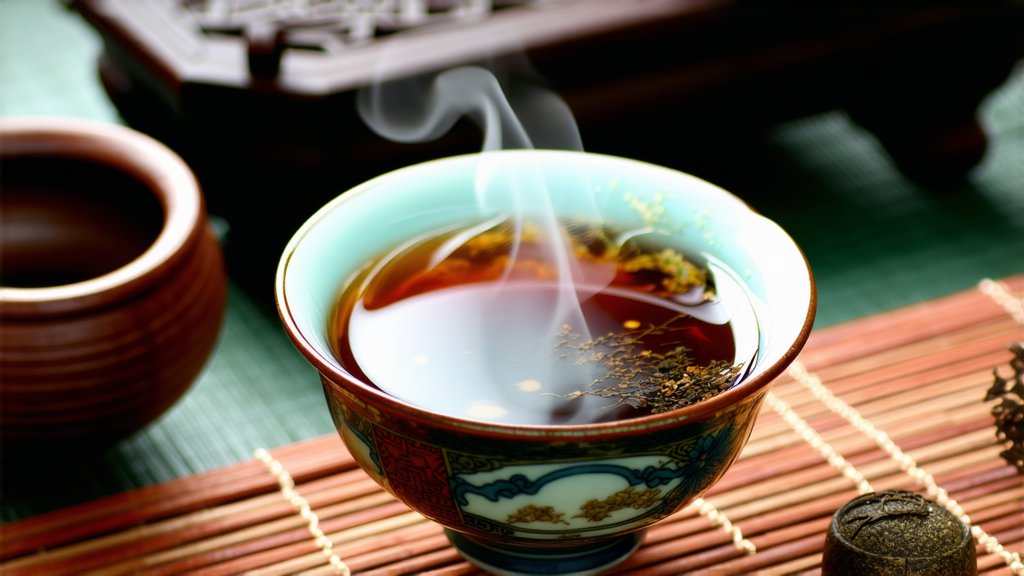
In the vast tapestry of Chinese tea culture, few varieties captivate the senses and the imagination quite like Pu-erh tea. With its deep roots in history and a production process that is as much art as it is science, Pu-erh stands out among the world's teas. This article embarks on a journey to explore the rich heritage, intricate craftsmanship, and unique sensory experience of this remarkable Chinese black tea variety.
A Glimpse into History
Pu-erh tea traces its origins back over a thousand years to the ancient caravan routes of Yunnan province, China. Historically known as the "Tea Horse Road," these trade routes were vital conduits for the exchange of goods between the Tibetan plateau and the Chinese heartland. Along these paths, Pu-erh tea emerged not only as a coveted beverage but also as a form of currency and a crucial element of diplomacy.
The name "Pu-erh" derives from the town of Pu'er in Yunnan, which became a significant hub for tea trading during the Tang Dynasty (618-907 AD). Over centuries, the tea gained prominence, especially during the Ming (1368-1644) and Qing (1644-1912) Dynasties, when it was designated as an official tribute tea for the Chinese emperor. This royal endorsement solidified Pu-erh's status as a tea of prestige and quality.
Varieties of Pu-erh Tea
Pu-erh tea is broadly categorized into two types: Raw (Sheng) Pu-erh and Ripe (Shou) Pu-erh. Each type undergoes a distinct fermentation process, resulting in unique flavors, aromas, and aging potentials.
Raw (Sheng) Pu-erh: This variety is made from sun-dried green tea leaves that are then compressed into various shapes such as cakes, bricks, or tuochas (mini cakes). Raw Pu-erh undergoes a natural fermentation process over time, influenced by microbial activity and environmental factors. As it ages, its flavor profile evolves from astringent and vegetal to smooth, mellow, and complex, often developing earthy and woody notes.
Ripe (Shou) Pu-erh: In contrast, Ripe Pu-erh undergoes a controlled fermentation process known as "wet piling" or "wo dui." During this process, piles of tea leaves are kept moist and warm, promoting accelerated microbial activity. This results in a tea that has a rich, deep color and a mellow, earthy taste with hints of sweetness and spice. Ripe Pu-erh typically requires less aging than Raw Pu-erh to develop its full flavor potential.
The Art of Craftsmanship
The production of Pu-erh tea is a testament to the skill and tradition of Chinese tea artisans. The journey from leaf to cup involves several meticulous steps:
-
Harvesting: Only the tender top leaves and buds are handpicked, ensuring the highest quality raw material.
-
Withering: Freshly picked leaves are spread out to wilt under sunlight, reducing moisture content and softening the leaves for further processing.
-
Fixation: The withered leaves are briefly heated to halt enzyme activity, preserving the green color and fresh aroma of the tea.
-
Rolling: Leaves are rolled to release juices and form twisted shapes, which enhances flavor extraction during brewing.
-
Sun Drying: Rolled leaves are dried in the sun to further reduce moisture content and prepare them for fermentation.
-
Compression: For both Raw and Ripe Pu-erh, the dried leaves are compressed into various shapes using traditional stone molds. This not only aids in storage and transportation but also influences the aging process.
-
Fermentation: Raw Pu-erh ages naturally over years, while Ripe Pu-erh undergoes the wet piling process to expedite fermentation.
The Sensory Delight of Pu-erh Tea
To fully appreciate the nuances of Pu-erh tea, one must engage in a mindful tasting experience. Here’s a guide to savoring this ancient brew:
-
Preparation: Use a Yixing clay teapot or a Gaiwan for brewing, as these materials enhance the tea's flavor profile. Rinse the leaves briefly with hot water to awaken their essence.
-
Infusion: Steep the tea at a temperature between 95-100°C (203-212°F) for about 10-30 seconds for the initial infusion. Subsequent infusions can be steeped longer, as the leaves open up and reveal deeper flavors.
-
Aroma: Before taking a sip, inhale deeply to appreciate the tea's aroma. Note any floral, fruity, earthy, or woody scents that arise.
-
Taste: Sip slowly and let the tea coat your palate. Pay attention to its texture—whether it feels silky, astringent, or velvety. Notice the progression of flavors from the first sip to the aftertaste.
-
Mouthfeel: Assess the tea's body and mouthfeel. A well-crafted Pu-erh should have a balanced combination of sweetness, bitterness, and astringency, leaving a lasting impression.
-
Reinfusions: Pu-erh tea is known for its ability to withstand multiple infusions. Each brew reveals new layers of complexity, making it a rewarding experience for the discerning tea drinker.
Conclusion
Pu-erh tea is more than just a beverage; it embodies centuries of history, culture, and craftsmanship. From its origins along the ancient Tea Horse Road to its revered status among tea connoisseurs worldwide, Pu-erh continues to captivate with its depth and versatility. Whether you prefer the evolving character of Raw Pu-erh or the immediate richness of Ripe Pu-erh, exploring this tea offers a gateway into the heart of Chinese tea tradition. So, brew yourself a pot, take a moment to reflect, and let the timeless allure of Pu-erh tea transport you across continents and eras.